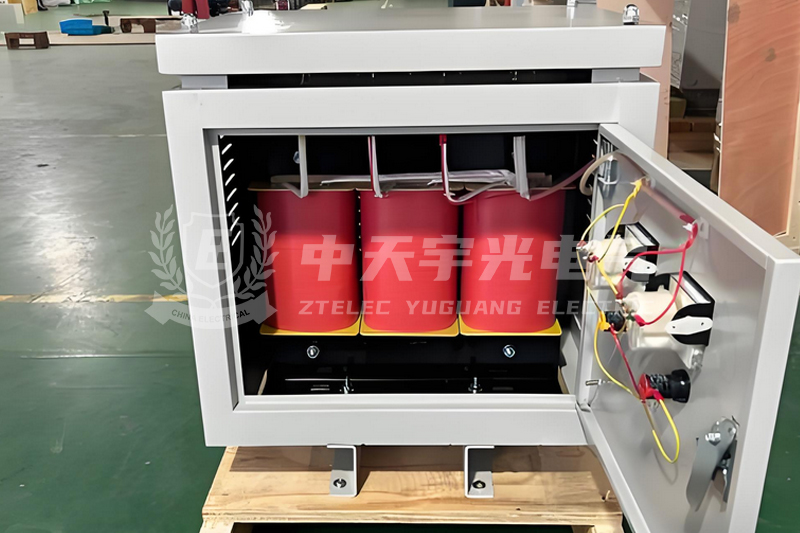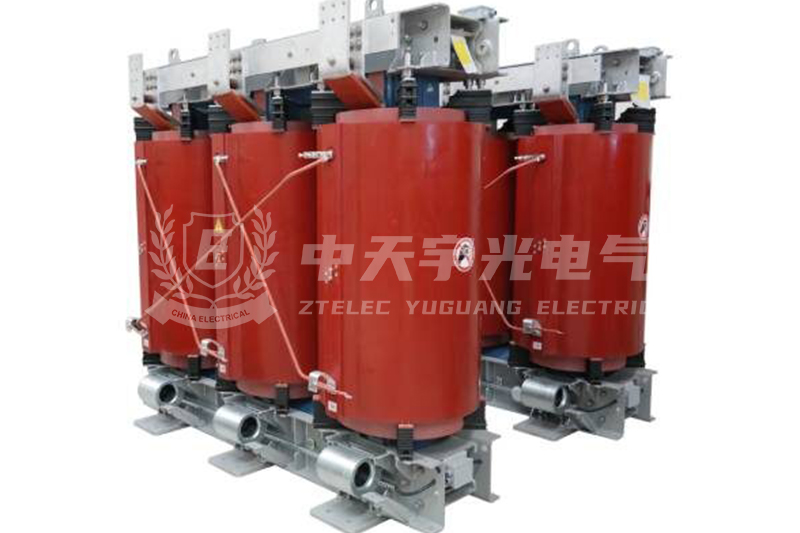The Future of Power Distribution: Why Dry-Type Transformers Matter
In today’s evolving power systems, dry-type transformers play a pivotal and irreplaceable role. They are not only core components for efficient power transmission and distribution but also critical assets for ensuring electrical safety and enhancing power quality. This article delves into the essential functions of dry-type transformers, their vital role in power distribution networks, and the consequences of their absence.

Core Functions of Dry-Type Transformers
As integral elements of power systems, dry-type transformers provide three fundamental functions that ensure safe and reliable power flow:
Electrical Isolation
Dry-type transformers establish electrical isolation between circuits, effectively preventing direct electrical contact. This dramatically reduces the risk of electric shock and protects equipment from damage caused by faults like short circuits or abnormal currents—creating a robust safety shield for users and systems alike.
Voltage Conversion
During power transmission, these transformers increase voltage levels to minimize line losses and improve transmission efficiency. On the consumption side, they reduce voltage to levels suitable for different equipment and end users, ensuring power is utilized safely and efficiently.
Power Quality Regulation
Dry-type transformers help stabilize voltage fluctuations and suppress harmonic interference, delivering consistent, high-quality power. This protects sensitive electrical equipment and supports uninterrupted operation in various environments.
The Importance of Dry-Type Transformers in Power Distribution
Dry-type transformers have become indispensable in modern power distribution systems due to their remarkable strengths in safety, low maintenance, environmental adaptability, and broad application range.
Enhanced Safety
Unlike traditional oil-immersed transformers, dry-type units use air as both cooling and insulating medium, eliminating risks of oil leaks, fire, or explosion. This makes them ideal for high-risk environments such as hospitals, airports, metro stations, and high-rise buildings—ensuring peace of mind for power operators and users.
Low Maintenance Requirements
Dry-type transformers do not require complex oil circulation systems or processing, simplifying maintenance tasks. Routine upkeep generally includes performance testing, coil cleaning, and airflow inspections—fast, easy tasks with minimal impact on ongoing operations.
Adaptability to Harsh Environments
Thanks to advanced materials and robust design, these transformers maintain stable performance in environments with high temperatures, humidity, or pollution. Their fire-retardant, eco-friendly, and non-toxic properties make them well-suited for mission-critical or challenging sites. Modern dry-type transformers now support voltage levels up to 35kV and capacities reaching 20MVA—proving both technical strength and scalability.
Diverse Applications
Depending on specific needs, dry-type transformers are available in various forms such as vacuum pressure impregnated (VPI) and cast resin models. From lighting circuits to complex equipment in airports, ports, and CNC machinery, these transformers serve a wide range of applications, highlighting their versatility and importance in modern infrastructure.

The Risks of Power Systems Without Dry-Type Transformers
Eliminating dry-type transformers from a power system can result in several critical issues:
Loss of System Stability
Without proper isolation and voltage regulation, the power grid would experience frequent fluctuations, overcurrents, and voltage spikes—causing instability, frequent faults, and system-wide disruptions.
Increased Safety Hazards
Without protective functions, electrical faults can directly reach end-user equipment. This significantly raises the risk of equipment failure, fires, or electric shocks, threatening life and property.
Sharp Drop in Efficiency
Without efficient voltage conversion, power losses during transmission would surge, lowering system-wide efficiency. Unstable power quality would further degrade equipment performance and increase energy waste.
Dry-type transformers are vital to the success and reliability of modern power distribution systems. Their unmatched ability to ensure safety, simplify maintenance, adapt to extreme conditions, and serve diverse applications makes them a cornerstone of power grid infrastructure. As energy demands grow and safety standards rise, dry-type transformers will continue to support efficient, stable, and future-ready power networks.
- more+releated article
- 2025-10-21Application of K Factor Transformer
- 2025-10-21Detailed explanation about transformer model w
- 2025-10-2010kV Oil-Immersed Transformer Safety: Lightnin
- 2025-10-20What are The Advantages of Phenolic Cotton Clo
- 2025-10-17Are Three-Phase Isolation Dry-Type Transformer
- 2025-10-17G10 Epoxy Sheet: Choosing the Right Specificat
- 2025-10-1610kV Oil-Immersed Transformer Operation Inspec
- 2025-10-163240-B Epoxy Phenolic Glass Fiber Cloth Lamina
- 2025-10-15G10 Epoxy Sheet: The Preferred Insulation Mate
- 2025-10-15Analysis of Energy-Saving and Noise Control Te





